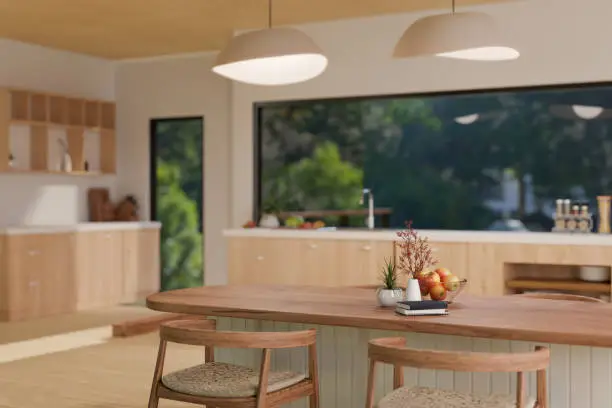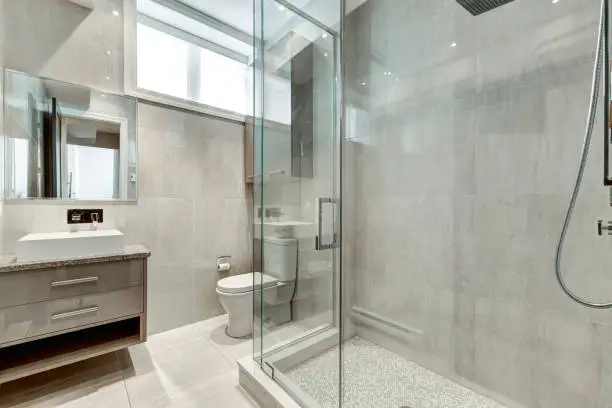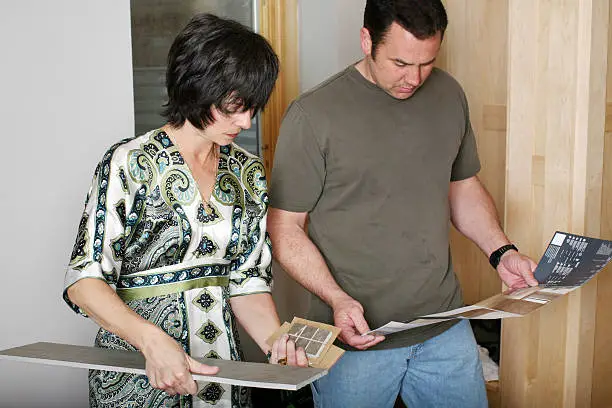A thorough redesign of the kitchen and the bathroom, with allergy-friendly improvements, can significantly increase the indoor air quality and reduce the number of environmental triggers. Some useful measures are non-toxic construction materials, improved ventilation systems and well-planned layouts. These actions will allow a residence to be aesthetically pleasing and have full functionality and will support the health of occupants.
Why Allergen-Free Design Is Becoming a Priority in Remodeling

Environmentally conscious houseowners are increasingly focusing on allergen-minimizing factors in kitchen and bathroom remodeling. It is common to find dust, molds and volatile organic compounds in these areas, which increase respiratory problems. The design of health thus starts by identifying the agents that cause allergic reactions and evaluating on how modern upgrades can ease them.
The Rise of Respiratory Concerns and Indoor Air Quality Issues
Indoor air quality has a bearing on the health outcomes like asthma and allergic rhinitis. According to the Environmental Protection Agency, indoor air is said to be polluted about 2 to 5 times more than the outdoor air. These are compounded by poor ventilation and the use of chemical-filled substances in kitchens and bathrooms. This leads to modern trends of remodeling to focus on finishes that are non-toxic, increased airflow, and easy to clean surfaces. These changes bring quantifiable increases in comfort and general well-being.
How Kitchens and Bathrooms Can Harbor Common Allergens
Kitchens and bathrooms form high foot traffic and high humidity areas, which makes them the most predisposed areas to allergens. In many instances, the sources like the mold in bathroom alcoves or the volatile organic compounds in kitchen cupboards are hidden. Through remodeling projects, these problematic zones can be corrected and at the same time improve on design and functionality.
Common Allergen Sources in Kitchens and Bathrooms
| Source | Common Location | Allergen Concern |
|---|---|---|
| Mold & Mildew | Showers, under sinks | Triggers asthma, breathing issues |
| VOCs (Volatile Organic Compounds) | Cabinets, paints, sealants | Causes headaches, respiratory irritation |
| Dust & Pet Dander | Floors, vents | Triggers allergies, eczema |
| Poor Ventilation | Bathrooms & closed kitchens | Traps allergens and humidity |
Hypoallergenic Kitchen Remodeling Materials and Layouts

Choosing the right material is crucial in containing allergic reactions during and after a renovation. The materials identified should be sturdy, impenetrable, and free of chemicals that emit gases. In addition, kitchen layout should be designed in such a way that the air circulation is increased and that the corners are not too tight in order to get a lot of dust to collect.
Low-VOC Cabinets, Countertops, and Flooring Options
During the process of selecting materials, give preference to low-VOC (Volatile Organic Compound) or no-VOC materials. These products produce less air pollutants hence provide more safety to households with allergies.
Allergy-Friendly Kitchen Materials to Consider:
-
Cabinets: Solid wood with water-based finishes
-
Countertops: Quartz (non-porous, easy to clean)
-
Flooring: Cork, sealed linoleum, or ceramic tile
-
Paint: Low-VOC or no-VOC certified products
These surfaces are not only better for your health, but they also require less intensive cleaning.
Proper Ventilation and Air Purification Solutions
A poorly regarded ventilation is essential in the context of allergy-proof remodeling. Its lack stimulates the accumulation of pollutants and humidity, which worsen the symptoms. The modern range hoods with HEPA filters, exhaust fans in the bathroom, and air purifiers built in an HVAC system all contribute to the increase in air turnover. The remodel contractors often recommend the energy-recovery ventilators (ERV), which circulate fresh air into the house without sacrificing the energy efficiency.
Designing Bathrooms with Allergy-Safe Materials

Bathrooms pose a unique allergenic risk that is the result of constant exposure to water and moisture. Through the process of renovation, one can eliminate outdated and porous surfaces and replace them with mold resistant and hypoallergenic surfaces that do not lack attractiveness.
Mold-Resistant Paint, Tiles, and Drywall
An increasingly wide range of construction materials is being produced specifically to withstand mold and mildew. The professionals in the area of building suggest using such components with the labels like mold-resistant or moisture-resistant, especially in case of drywall and grout.
Smart Choices for Allergy-Resistant Bathrooms:
-
Mold-resistant drywall (green board or cement board)
-
Anti-microbial grout and caulking
-
Non-porous wall tiles like glass or porcelain
-
Paints with mildew inhibitors
These materials work together to reduce the need for harsh cleaners and eliminate common allergen sources.
Humidity Control With Smart Ventilation Systems
The most important is the process of controlling moisture. Sophisticated ceiling- or wall-mounted fans with in-built humidity sensors act automatically and automatically stop working when the desired humidity level is reached. Some systems are also able to be connected to home-automation systems and can continually give live monitoring of humidity. Where bathrooms are small or poorly ventilated, inline fans or dehumidifiers can be installed to create a significant difference.
Choosing the Right Remodel Contractors for Health-Focused Projects

Any health-conscious remodeling project would succeed or fail depending on whether the right professionals were enlisted. Allergen-safe design Remodel contractors with allergen-safe design knowledge can recommend material choices and have informed oversight of the installation process.
Experience With Eco-Friendly and Non-Toxic Materials
In the process of interviewing the contractors, it is appropriate to ask the applicant whether he/she had ever engaged in low-toxicity remodeling projects before. The most qualified teams will have developed long-standing relationships with vendors of low-VOC materials and mold-resistant products, and they should be ready to explain the particular steps that they take to reduce dust and waste during the construction process.
Communicating Special Health Requirements in Advance
Don’t assume your contractor knows your needs—be upfront about any respiratory sensitivities or allergies in the household. A good contractor will:
-
Recommend safe alternatives for high-VOC materials
-
Use sealed containers and vacuums to limit dust
-
Schedule construction for optimal ventilation
-
Suggest additional filtration or purification systems
Your health should be part of the planning conversation—not just an afterthought.
Cost Considerations for Health-Conscious Remodeling

A home remodeling strategy that is allergy-safe may be beneficial in the long-term. Though some materials require increased initial investment they usually mean less spending on cleaning, maintenance and healthcare.
Long-Term Savings from Healthier Living Environments
Investing in mold-resistant drywall or VOC-free paints reduces your future exposure to allergens—and the need for costly repairs. Clean air also improves sleep, focus, and energy. These health benefits can translate into fewer doctor visits and less time missed from work or school.
Cost Comparison Table: Traditional vs. Allergy-Friendly Materials
| Feature | Traditional Option | Allergy-Friendly Upgrade | Cost Difference |
|---|---|---|---|
| Paint | Standard Latex Paint | Low-VOC/Mildew-Resistant Paint | +10–15% |
| Drywall | Regular Drywall | Mold-Resistant Board | +15–20% |
| Cabinets | MDF with chemical sealant | Solid Wood with water-based finish | +20–25% |
| Ventilation Fan | Basic exhaust fan | Smart humidity sensor fan | +15–30% |
Energy-Efficient Upgrades That Improve Air Quality
Environmental-friendly practices like smart ventilation, radiant heat floor, and enhanced insulation will limit allergens as well as energy consumption. When doing a remodeling exercise, hire remodel contractors that are certified in energy efficiency or one who has knowledge in LEED.
Frequently Asked Questions (FAQs)
1. What are the best hypoallergenic materials for kitchens and bathrooms?
Sealed tile floors and quartz countertops, as well as cabinetry that contains low-VOC, are now among the most recommended ones. These items are dust resistant, mold resistant and off-gassing resistant, thus making them invaluable in homes where there are high allergen sensitivities. Wherever possible, mold-proof drywall and mildew-proof paint are highly recommended in bathroom applications. When ordering these materials, it is prudent to discuss with your contractor on certifications to make sure that there is adherence to relevant standards and guidelines.
2. Can a remodel really help with allergy symptoms?
An indoor air quality can be greatly improved through a remodeling project specifically aimed at reducing allergens. The kitchen and bathroom especially have been known to hamper air conditions, and this can be in terms of humidity, volatile organic compounds (VOCs) and other dust accumulations. Treating these issues by wisely choosing the materials and installing sufficient ventilation, many homeowners report the measurable improvement in the allergic symptoms. These are particularly useful measures to families that are managing asthma, eczema or environmental sensitivities.
3. How do I find contractors experienced with health-conscious remodeling?
During the process of choosing remodel contractors, pay attention to the companies that openly promote eco-friendly or hypoallergenic services. Ask directly about the nature of the materials they use and are the dust containment procedures in place. A competent expert will also suggest the post-remodeling measures that help to improve the indoor air quality. The local remodeling trade associations and green building directories can be consulted to find a right practitioner.
4. Is it expensive to remodel with non-toxic materials?
Not invariably. Whereas some of the materials designed to be allergy-sensitive come at a relatively higher initial cost, they hardly require much in terms of maintenance and are likely to have a long life. The associated health benefits, that is, reduced allergic reactions and reduced physician visits, have the potential to save a significant amount of money in the long term. Contractors thus will be able to help in the identification of the upgrades that offer the most desirable returns on investment under any given budget.
5. Are there signs that my current kitchen or bathroom is making allergies worse?
True–moldy smells, flaking paint, chronic humidity, or mold visible to the naked eye all are absolute red flags. Allergens could also be detected by frequent sneezing or coughing, or by itchy eyes when getting to a bathroom or cooking. A remodel would present a chance to fix these structural problems through the installation of cleaner and safer material.
When you need an environment where you can get to live a healthy life, go to KBR Kitchen & Bath. Our remodeling services are highly experienced in projects that are designed to suit your health first. Be it in mold resistance countertops or high-performance ventilation, we provide upgrades, which are not only beautiful, but also safe. Visit our Fairfax, Bethesda (Kitchen), Bethesda (Bathroom), or Manassas showrooms or call us now to book a health-first remodeling appointment.

